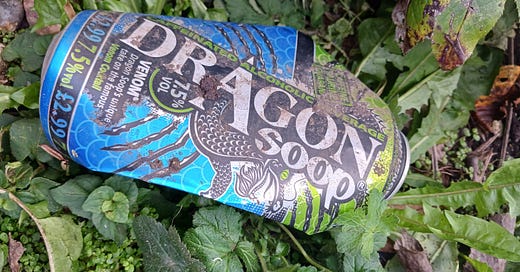How many times do I pick up a drinks can that someone's discarded, turn it upside down to empty it before bagging or binning it, and realise a poor slug has met its death in there? Doesn't matter whether it was a can of lager or a fizzy something, that slug - sometimes two, like today near the Veracity Rec - was lured in and couldn't get back out.
Often the slug is too big to be shaken out, though today's two were small, so it was quite easy to free them. But I've been known to carefully cut a can in half with secateurs to free the slug.
Why do I go to such lengths? It’s partly so I can put the can in the recycling bin without causing ‘contamination’. I'm also kind of recycling the slug, though. It seems such a waste that it died needlessly, without feeding someone else. So maybe even a dead, possibly fermented, slug is a snack for someone, right? A fox, maybe. (Would the fox become tipsy by eating a fermented slug?)
Really the best thing all round is to pick up a can before a slug has the chance to glide in. Among the litter picking humans I know, I think most do it for themselves, because the rubbish looks unsightly. They want to make a place look tidier. I’m motivated by thinking about the creatures who live and eat in these places, so am more inclined to pick up stuff from habitats and wildlife corridors – that’s why I try to get to the glass bottles in the alleys around my home before they get smashed by someone. There are hedgehogs, foxes, birds, cats and dogs using these alleys.
Motivation doesn’t matter much in a way, since even on a pavement with nothing growing, human trash presents a risk, so it’s good that there are people willing to pick it up. Even if they are doing it for themselves, they’re benefitting other species at the same time, which is all that matters.
© Jill Doubleday. Find out more about Jill’s work at www.dandelionnature.org.



